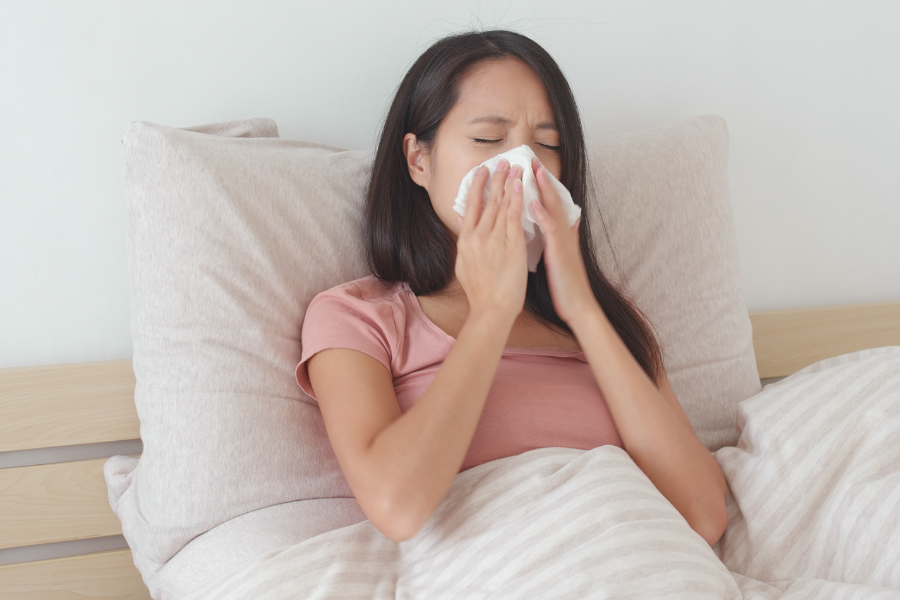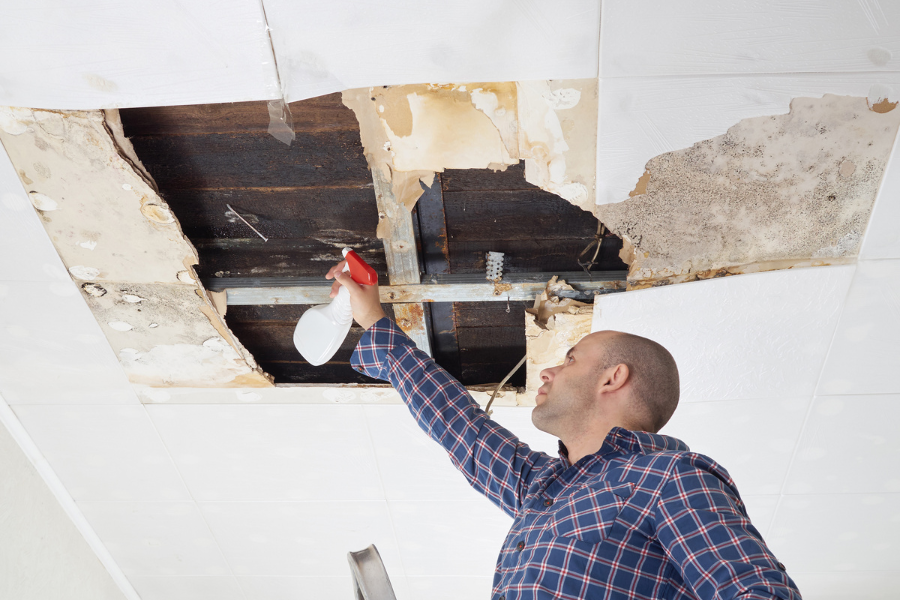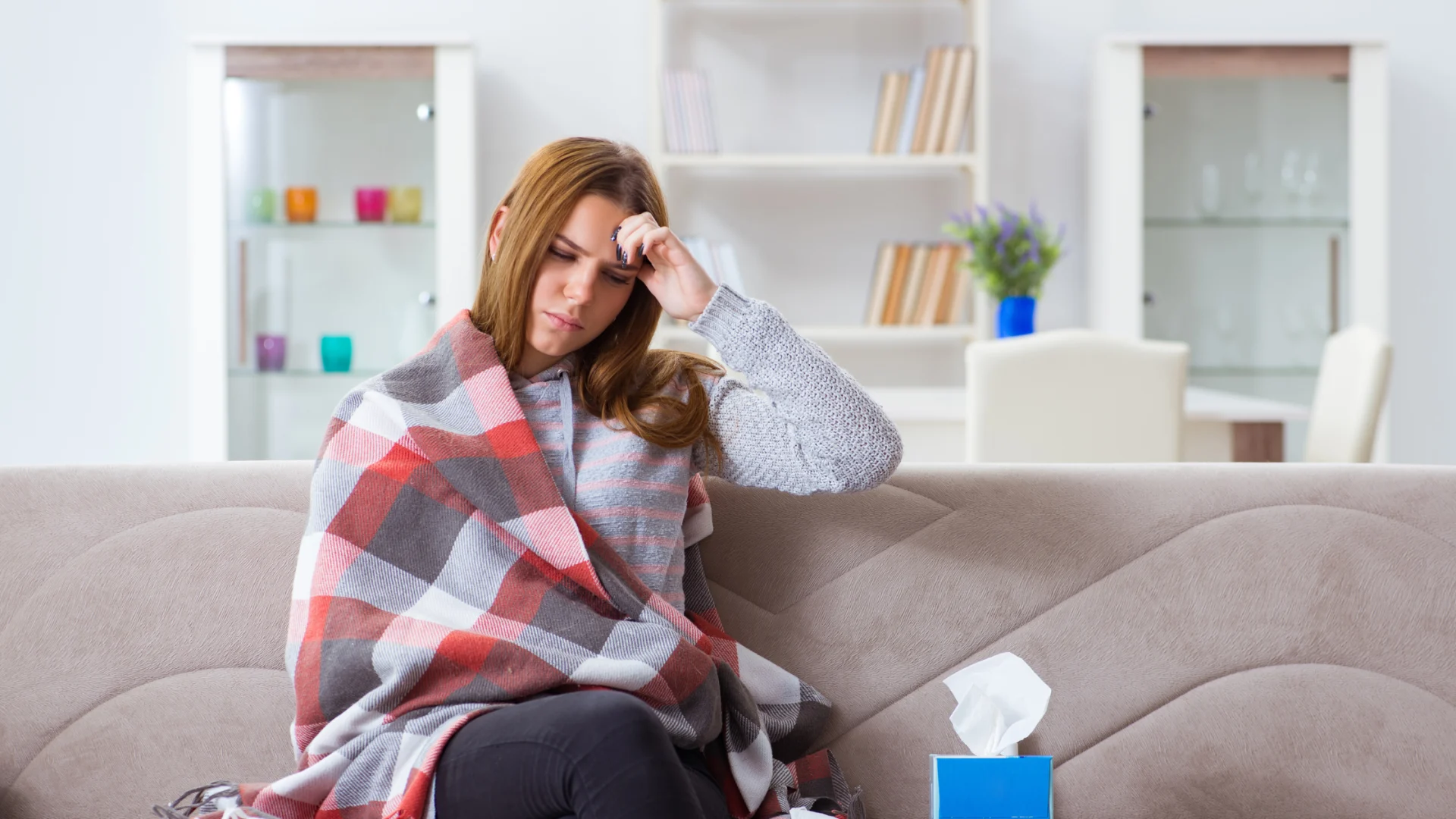Whether it’s a fuzzy white patch on the wall or black spots on your shower curtain, or an orange film forming in your kitchen, house mold is very unsightly. In some cases, mold can make you sick, especially those with asthma or allergies. Whether you think you are ill from mold now or want to know the signs of mold sickness, keep reading on.
But determining whether mold in your house is making you sick is not easy. Each member of the household can be affected by toxicity in various ways. Some experience fatigue, headache, migraine, brain fog, difficulty breathing, or depression.
In this article, we will help you determine whether you are sick from mold and the many ways to prevent mold growth.
Is Mold the Same as Mildew?
First off, is mold the same as mildew? The quick answer is no. Mold and mildew are often associated together as if they are the same substance.
However, according to the EPA (Environmental Protection Agency), mold and mildew aren’t much different. Mildew is a type of fungus and includes some types of mold. It usually grows on shower walls. It is easy to clean with a simple scrub brush, household cleaner, and some elbow grease.
On the other hand, mold includes all species of fungi. Removing mold may require removing ceiling panels, carpets, or places where the fungi grow. It’s worth the effort, though. After all, mold can make you sick and harm your health.
Is Mold Common in Houses?
Yes, mold is common in houses. Mold tends to grow and spread in places with moisture or leaks, like windows, roofs, floors, or pipes.
Mold grows well on organic matter like cardboard, drywall ceiling tiles, paper, and wood. It can also appear in homes around open doorways, vents, air conditioning systems, and heating.
What are the Signs that Mold is in Your House?
Musty smell, water damage, spotted clothing, and contaminated carpets are signs of mold. It grows so fast that mold will begin to form 24 hours after a flood or leak. If you notice these signs, it is essential to remove mold colonies before they multiply even further.
Can You Get Sick From Mold?
Mold can make you sick, or not all, if you have a high tolerance to mold. If someone in the house has a compromised immune system, they are most likely vulnerable to experiencing severe symptoms.
However, it’s hard to determine whether mold is making you sick. There is no actual test to see if you have been exposed to mold. If you have persistent coughing and congestion in places where you have seen mold and get better when you are away from there, then it’s probably mold that makes you sick.
While you can’t determine if you have come in contact with mold, you can test if you are allergic to mold. You can see a doctor for a blood test or skin prick test.
What Are the Symptoms That You Are Sick from Mold?

As mentioned, there’s no test to see if mold makes you sick. But here are some health signs and symptoms that are linked to mold exposure:
Allergy Symptoms
An allergic reaction is the most common sign of mold making you sick. Some allergy symptoms include stuffy or runny nose, sneezing, coughing, sore throat, and fever. It is difficult to tell whether these symptoms are due to pollen, pet dander, or mold.
But if you think that the symptoms spike when you’re at home and disappear when you’re out of the house, that is a clue that you could have untreated mold sickness.
Skin Problems
Mold can cause rashes and fungal infections on the scalp that may lead to hair loss and dermatitis. These effects are most likely if you come in direct contact with mold.
Increased Asthma Attacks
If you have asthma, you are very vulnerable to more asthma attacks when you come in contact with mold. Meanwhile, if you have kids with you, they may develop asthma due to mold in the house.
Respiratory Infections and Illnesses
Mold has mycotoxins which can enter your respiratory system when you breathe. If you have a weak immune system, you will be vulnerable to respiratory problems, chronic lung disease, or a compromised immune system.
Mental Health Problems
Adults may suffer from alarming memory loss if exposed to serious concentrations of mold. Children may also develop learning disabilities.
These scary symptoms are possible because our optic nerve and olfactory neurons are connected to our brains, which mycotoxin can penetrate through the nose and eyes.
How to Treat Mold Exposure Symptoms?
The best way to treat mold exposure symptoms is to clean the house thoroughly. However, if you are already exposed, and it’s too late, and you think mold is making you sick, you can do the following:
Use Nasal Sprays
Over-the-counter nasal sprays like fluticasone (Flonase) can relieve mold symptoms. It can reduce airway inflammation due to mold allergies.
Allergy Shots
This treatment needs a doctor’s prescription and advice. Your doctor may inject regular shots to get your immune system used to mold exposure.
OTC Medications
Over-the-counter antihistamines like cetirizine can reduce immune system response. If mold exposure makes you sick, always keep antihistamines with you. Decongestants can likewise treat swelling caused by mold allergies.
What to Do If You Find Mold in Your House?
If you find mold in your house, treat it immediately. You need to clean up the mold or fix the moisture problems in your home. You can remove mold from hard surfaces through simple household products like cleaning vinegar, hydrogen peroxide, or soap and water.
To learn how to use cleaning vinegar to kill mold, read our article – Will Cleaning Vinegar Kill Mold?
or
Read our article Does Hydrogen Peroxide Kill Mold to learn how to use hydrogen peroxide to kill mold.
How to Prevent Getting Sick from Mold in Your House?

Rooms with moisture, a leak, flood water, or standing water are most likely where mold can grow. Use these tips to prevent the growth of mold inside the house.
Wipe Down the Shower or Tub
Mold is common in a bathroom as this is typically where standing water abounds. Don’t leave the bathroom wet to prevent mold growth on shower tiles or tubs. Wipe down surfaces with a towel after using the shower or tub. Cleaning your shower tiles with vinegar also helps to prevent mold or mildew.
Clean up the Spill Immediately!
Wet blankets, carpets, and upholstery could encourage mold growth if they aren’t dried out immediately. In just 28 to 48 hours, these materials can be breeding grounds for mold.
Fix Leaks Quickly
Once you notice mold growing on your ceiling, under the sink, or in the attic, you have a roof or plumbing leak. Fix the leak and clean the mold to prevent it from coming back. Roof and plumbing leaks can be left unnoticed, so check them occasionally.
Reduce Indoor Humidity
Reduce air conditioning or vent moisture-producing appliances to prevent mold from growing. Instead, use a dehumidifier in areas of your home with excess moisture. Mold can grow if the relative humidity is high. Use exhaust fans when cooking or showering to reduce excess humidity.
Conclusion – Are You Sick From Mold?
Mold is common in homes and not harmful, but exposure to severe levels of it can trigger symptoms that may be detrimental to your health. People with allergies, asthma, or weak immune systems may have health reactions to mold, regardless of whether the exposure is direct or not.
If you think you are sick from mold, we advise that you prevent its growth in your house by keeping your home clean and dry. Be mindful of mold growth in your house and do something before it spreads.
Meanwhile, if mold is not noticeable, but you suspect that your home has mold, try reducing your home’s humidity level, and eliminate leaks and dampness.
To learn more about mold in your home, read our article – “Can You Get Sick From Mold In Your House?”
To learn more about how to get rid of mold in your house, check our article – “Can You Remove Mold From Your House Naturally?”

